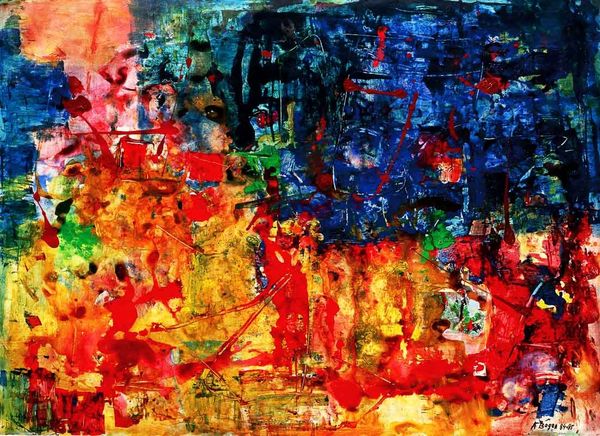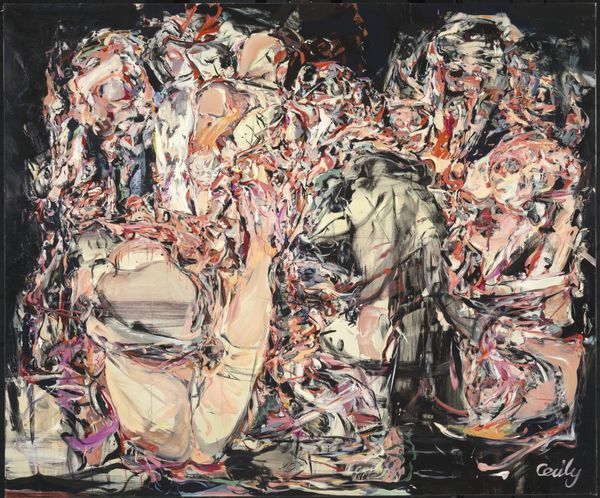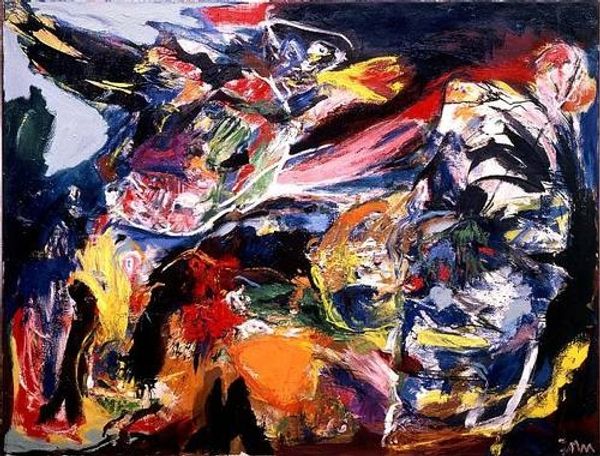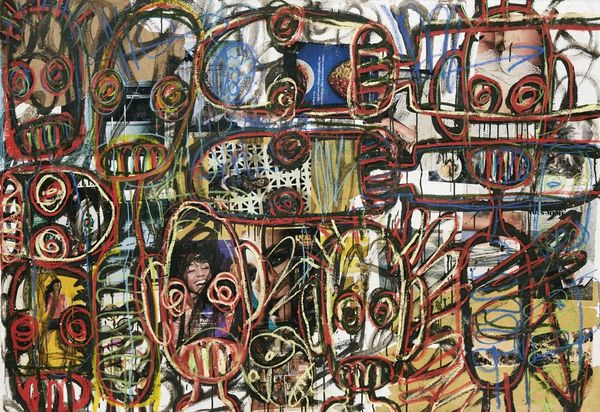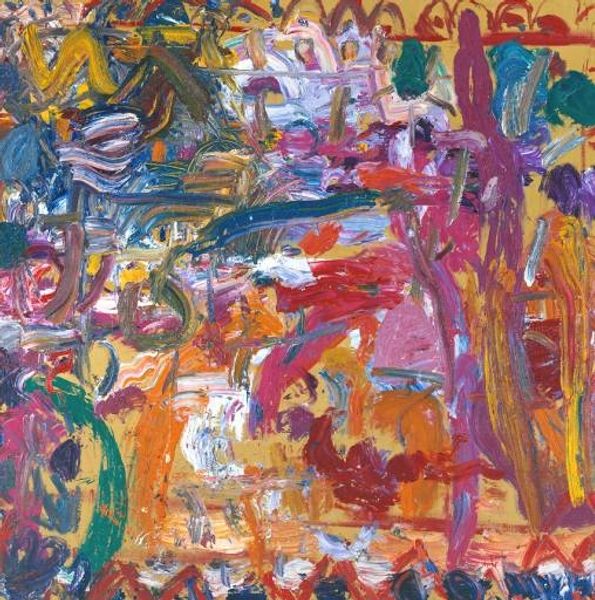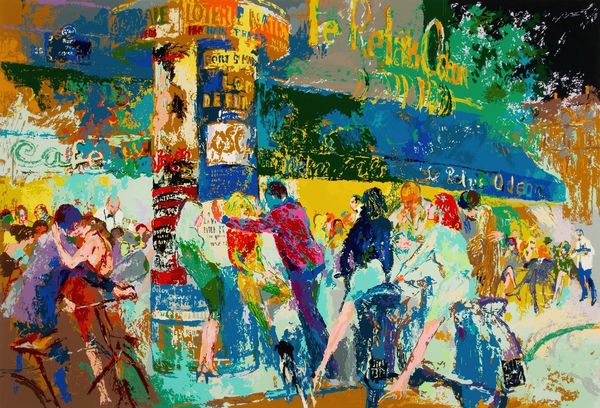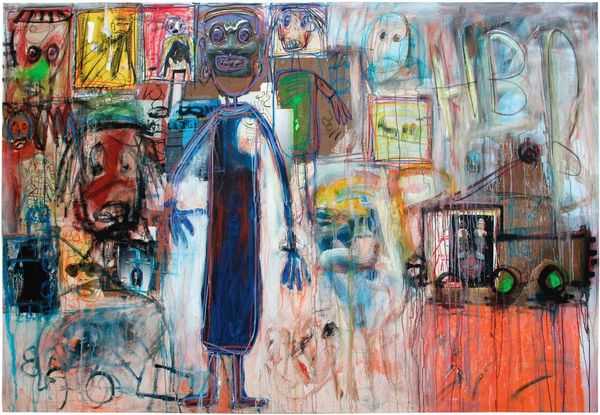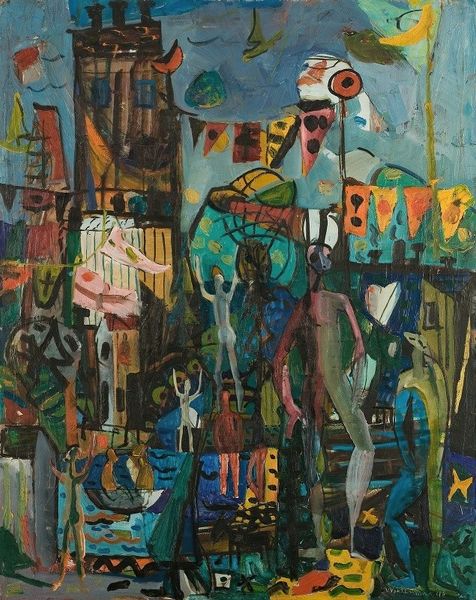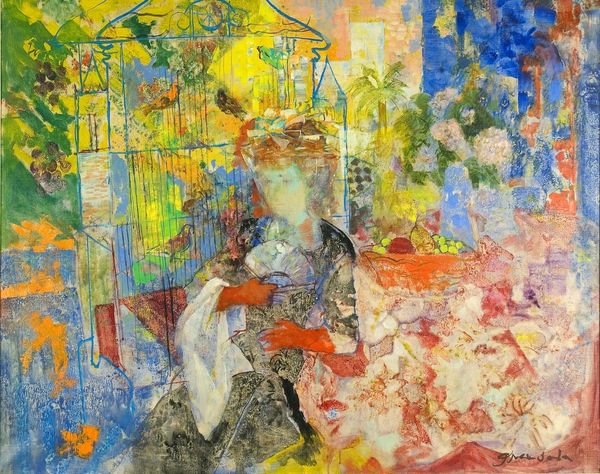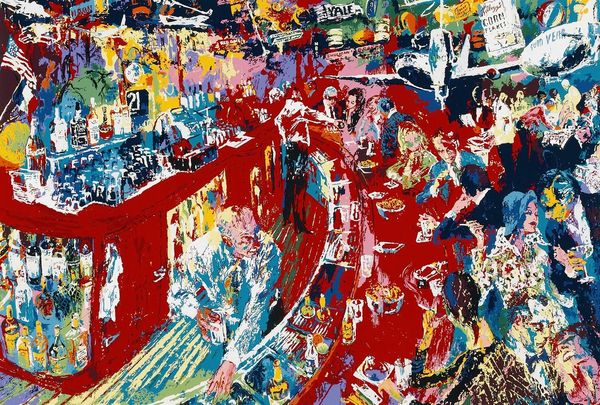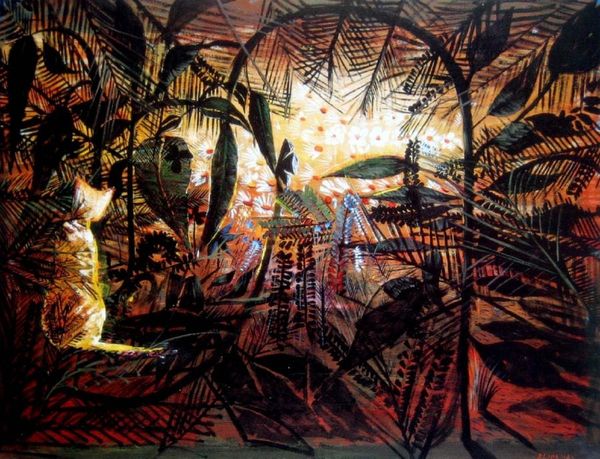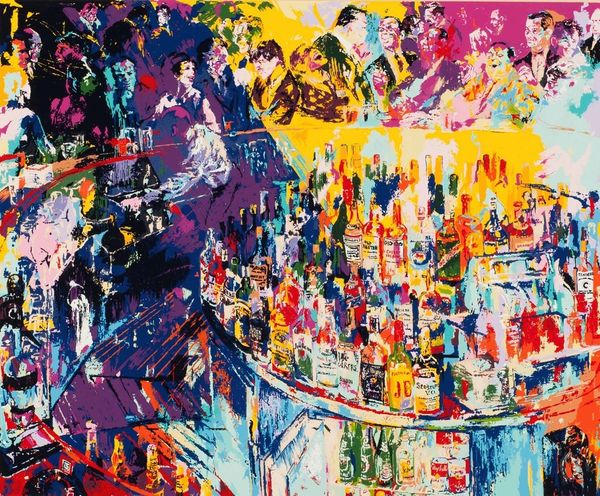
Copyright: Public domain
Editor: Pavel Filonov’s 1911 oil painting, "Horsemen," is quite a vibrant explosion on canvas! The fragmentation is mesmerizing but almost chaotic. I am really drawn to how the figures almost emerge from this field of color and line. What do you see in this piece that maybe I am missing? Curator: It's more than just vibrant, isn’t it? Look closely at how Filonov fractures the figures. He's not just representing reality, he's dissecting it, revealing the inner workings, almost like a post-revolutionary autopsy of power and tradition. Consider the historical context: 1911, Russia is on the cusp of massive social upheaval, old hierarchies are crumbling, and new ideologies are emerging. How do you think that political unrest might be reflected here? Editor: So you see the fragmented forms as reflecting a sort of societal breakdown? I hadn't quite considered that. I was more focused on the purely formal aspects, you know, color and composition. Curator: Exactly, the personal is always political. And don’t just stop at the visual either; think about who these horsemen are typically figures of authority, power. Filonov seems to dismantle that authority visually. Where do we see echoes of similar themes in later works of socialist realism or even in contemporary protest art? What does it mean to take that authority away from a historical image? Editor: It really makes me rethink what Expressionism could express beyond the personal; now it feels like the canvas becomes a battleground for ideas, mirroring those tumultuous times. Thank you so much for this perspective; now I can dig much deeper in my analysis of this painting! Curator: And, that intersection is where the power of the painting truly resides.
Comments
No comments
Be the first to comment and join the conversation on the ultimate creative platform.
